- Coil Inductance Calculator & An Essential Guide for Electrical Engineers
- Introduction
- TL;DR
- Understanding Inductance and Its Impact on Electrical Engineering
- The Basics of Inductance
- Practical Applications of Inductance
- Inductance in Coils and Wires
- Coil Inductance
- Wire Self Inductance
- Inductance in Electrical Equipment
- Inductance in Oscilloscopes and Signal Generators
- Inductance in Signal Analyzers
- Glossary of Terms
- Why Choose Keysight for Your Wireless Communication Needs
- Whenever You’re Ready, Here Are 5 Ways We Can Help You
- Popular Used Oscilloscopes
This calculator uses your input of coil dimensions and winding count to accurately compute the inductance of an electrical coil.
How many times have you flicked a switch and enjoyed the immediate brilliance of light? How often have you enjoyed your favorite tune flowing through your headphones? All these ubiquitous experiences share a common, often overlooked phenomenon—inductance.
Inductance defines the behavior of an electric circuit's response to changing currents, acting as a kind of memory of past current flow. This attribute is essential when dealing with alternating current (AC) systems, such as those in power transmission and many modern electronic devices. From designing efficient power transformers to optimizing wireless charging systems for electric vehicles, inductance calculations lie at the heart of these engineering marvels.
Inductance is also instrumental in creating filters in audio and radio frequency systems. It shapes the performance of antennas, allowing us to tap into the world of radio and television broadcasting. In the realm of digital electronics, understanding inductance is crucial to mitigate issues related to signal integrity and electromagnetic interference.
Whether we realize it or not, our modern world is electrified and digitized, and inductance plays a starring role. With that, let's delve into the intricacies of calculating inductance and illuminate this fascinating world of electrical engineering.
TL;DR
- Understanding Inductance: Inductance is a fundamental property of electrical circuits that opposes changes in current. It plays a crucial role in many electrical applications, including transformers, power transmission lines, and high-frequency circuits.
- Coils and Wires: The inductance of coils and wires, influenced by factors such as number of turns, coil area, length, material, and shape, plays a key role in the design of electrical and electronic devices.
- Inductance in Devices: Inductance greatly impacts the operation and performance of devices like oscilloscopes, signal generators, and signal analyzers. Understanding it can improve troubleshooting, design decisions, communication, and innovation.
Understanding Inductance and Its Impact on Electrical Engineering
Inductance is a property of electrical circuits that opposes a change in current. It's the electrical counterpart to physical inertia. If you've ever felt resistance when trying to push a stationary object or stop a moving one, you've experienced inertia. Inductance does the same thing, but with electric current. It resists changes, storing energy in a magnetic field and releasing it as needed.
The Basics of Inductance
Inductance, represented by the letter 'L' and measured in Henry (H), was first defined by physicist Heinrich Lenz in the 19th century. It depends on the physical characteristics of the circuit—things like coil geometry, number of turns, and the type of material within the coil.
The fundamental equation for inductance is:
L = N²/R
- L is the inductance
- N is the number of turns in the wire coil
- R is the magnetic reluctance
Inductance can also be calculated from Faraday's Law of Induction. However, these calculations can get quite complex, and often require the use of calculus or specialized software for complex geometries.
| Parameter | Formula |
|---|---|
| Inductance (L) | L = N²/R |
| Magnetic reluctance (R) | R = ℓ/μA |
| Magnetic field strength (H) | H = NI/ℓ |
| Magnetic Flux (Φ) | Φ = BA |
| Induced EMF (E) | E = -d(Φ)/dt |
Note: ℓ = length of coil, A = area of coil, B = magnetic field, N = number of turns, I = current, μ = permeability, t = time.
| Key Takeaway |
|---|
| Understanding and calculating inductance is key to designing and managing electrical systems. Whether you're working on power systems, communication systems, or digital electronics, inductance is a crucial factor that can't be ignored. |
Practical Applications of Inductance
Inductance is an underlying principle that powers several everyday applications and high-tech innovations. It is the heartbeat of an electrical transformer, which works on the principle of mutual inductance to step up or step down voltages.
Power transmission lines have inductive characteristics, impacting power transfer efficiency and signal integrity. Power factor correction circuits often contain inductors to balance inductive loads and improve system efficiency.
In the digital world, inductance is a key player in the design of high-frequency circuits. It is also crucial in mitigating issues such as signal integrity and electromagnetic interference.
Inductors also form critical components in filter circuits to segregate signals of different frequencies, making them essential in audio and radio frequency applications.
Steps to calculate inductance using a calculator:
- Identify the coil's physical characteristics, including the number of turns (N), the length (ℓ), and the area (A).
- Calculate the magnetic reluctance (R) using the formula R = l/μA.
- Plug in the values into the inductance formula: L = N²/R.
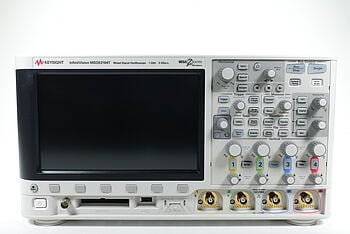
Inductance in Coils and Wires
The principle of inductance is prominently observed and applied in coils and wires, key components in electrical and electronic devices.
Coil Inductance
Coil inductance, as the name suggests, is the inductance inherent to a coil of wire. The coil, also known as an inductor, stores energy in its magnetic field when electric current passes through it. This inductance is integral to the coil's ability to oppose changes in current and can be calculated based on it’s physical properties, as discussed earlier.
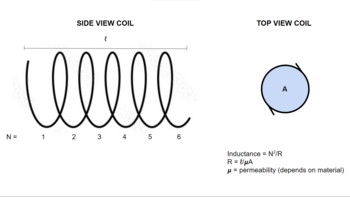
Here are the main factors affecting coil inductance:
- Number of Turns: The inductance increases with the square of the number of turns in the coil. Thus, doubling the turns quadruples the inductance.
- Coil Area: The greater the coil area (the area enclosed by each turn), the higher the inductance.
- Coil Length: A shorter coil results in higher inductance because the magnetic field lines are less dispersed.
- Material: The coil's material impacts its permeability (μ), which is the measure of how easily it can form a magnetic field. Higher permeability leads to higher inductance.
- Coil Shape: The shape of the coil also affects its inductance. For instance, toroidal (donut-shaped) coils tend to have higher inductance than solenoid (cylindrical) ones due to better magnetic field containment.
Wire Self Inductance
Self-inductance, or simply inductance, is a fundamental property of a wire or a conductor. It is a measure of the wire's ability to induce a voltage onto itself due to changes in current flowing through it. This phenomenon occurs due to the wire's magnetic field, which expands or contracts as the current through the wire changes.
In simpler terms, a wire's self-inductance is like its electrical "inertia" – it resists changes in the current flowing through it by inducing an opposing voltage. The unit of self-inductance is the Henry (H).
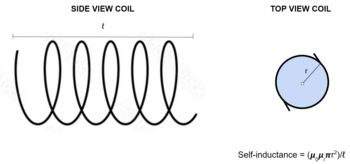
Steps to calculate wire self-inductance:
- Identify the wire's length and radius. For a straight wire, the length would be its actual length, but for a coiled wire, it would be the total length of the wire used in the coil.
- Use the formula for self-inductance of a wire: L = (μ₀μr * π * r²) / length, where μ₀ is the permeability of free space, μr is the relative permeability of the wire material, r is the radius of the wire, and length is the total length of the wire.
- Input the values into the formula and calculate the self-inductance.
Remember, the self-inductance value is crucial in understanding how a wire will behave in an AC circuit and is often an important factor in the design of electrical and electronic devices.
Inductance in Electrical Equipment
Inductance plays a pivotal role in the operation of electrical equipment, including oscilloscopes and signal generators.
Inductance in Oscilloscopes and Signal Generators
Oscilloscopes are used to visualize varying signal voltages, usually as a two-dimensional plot of one or more signals as a function of time. Inductance is important in an oscilloscope as it impacts the shape of the waveform displayed, especially when observing AC signals or transient phenomena.
Signal generators, on the other hand, are electronic devices that generate repeating or non-repeating signals. They are often used in designing, testing, troubleshooting, and repairing electronic or electroacoustic devices. Inductance is critical in signal generators because it affects the signal's frequency, phase, and amplitude.
| Device | Role of Inductance |
|---|---|
| Oscilloscope | Impacts the waveform shape. Helps in understanding the behavior of inductive elements in the circuit under test. |
| Signal Generator | Affects the output signal's frequency, phase, and amplitude. Inductive elements can modify the characteristics of the generated signal. |
Benefits of understanding inductance for operating these devices:
- Improved troubleshooting: Knowing how inductance affects a circuit can help engineers troubleshoot issues faster and more efficiently.
- Better design decisions: Understanding inductance can guide engineers in making more informed design decisions, leading to better-performing, more efficient devices.
- Innovation and optimization: A deep understanding of inductance and its practical effects can spur innovative approaches to optimize electronic devices and systems.
Understanding inductance and its practical effects is critical for any engineer working with electronic devices, whether they're designing new systems, maintaining existing ones, or conducting research and development.
Inductance in Signal Analyzers
Signal analyzers are used to measure and interpret the quality or characteristics of signals, usually in the frequency domain. Inductance is an essential parameter in the operation of these devices as it affects signal quality and the analyzer's ability to accurately measure and interpret signals.
For instance, when analyzing a signal from an inductive load, the inductance can affect the signal's phase and amplitude, especially at high frequencies. Signal analyzers must take this into account to accurately decode the information. Inductance can also cause resonances in circuits, which can lead to signal distortion if not properly managed.
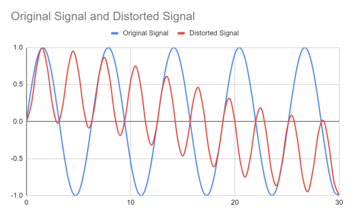
| Key Takeaway |
|---|
| Inductance plays a critical role in the operation and efficacy of signal analyzers. Understanding inductance and how it affects signals and circuits is crucial for accurate signal analysis, leading to more precise diagnostics and better decision-making in various engineering applications. |
Glossary of Terms
| Term | Definition |
|---|---|
| Inductance (L) | The property of an electrical circuit that opposes a change in current, measured in Henry (H). |
| Coil | A series of loops of wire, often wound around a core. |
| Self-Inductance | The ability of a circuit or wire to induce a voltage onto itself due to a change in current. |
| Oscilloscope | A device used to display and analyze the waveform of electronic signals. |
| Signal Generator | An electronic device that generates repeating or non-repeating signals. |
| Signal Analyser | A device that measures and interprets the quality or characteristics of signals. |
| Henry (H) | The unit of inductance in the International System of Units. |
| Permeability (μ) | A measure of how easily a material can form a magnetic field. |
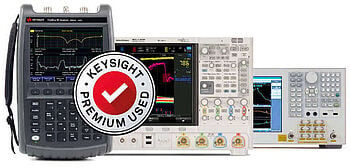
Why Choose Keysight for Your Wireless Communication Needs
Keysight Technologies is a renowned leader in electronic design and test equipment. Here's why you should choose Keysight for your wireless communication needs:
- Advanced Solutions: Keysight provides a wide range of innovative and cutting-edge tools for testing, measuring, and analyzing wireless signals.
- Reliability: Keysight's tools and services are trusted by engineers worldwide due to their high reliability and precision.
- Comprehensive Support: Keysight offers excellent customer support, including guidance on using their tools and solutions effectively.
- Future-Ready: Keysight stays at the forefront of technology, ensuring their solutions are prepared for the evolving demands of wireless communication.

Whenever You’re Ready, Here Are 5 Ways We Can Help You
- Browse our premium refurbished network analyzers, oscilloscopes, signal analyzers and waveform generators.
- Call tech support US: 1 800 829-4444 Press #, then 2 Hours: 7am – 5pm MT, Mon– Fri
- Talk to our sales support team by clicking the icon (bottom right corner) on every offer page
- Create an account to get price alerts and access to exclusive waitlists
- Talk to your account manager about your specific needs
Popular Used Oscilloscopes
Keysight Used Oscilloscopes offers a wide range of industry leading pre-owened oscilloscopes, ranging from older generation Agilent oscilloscopes to the newest Keysight oscilloscope models. So whether you are a fist time buyer, replacing a model like-for-like or looking for upgrade – we have something for you.